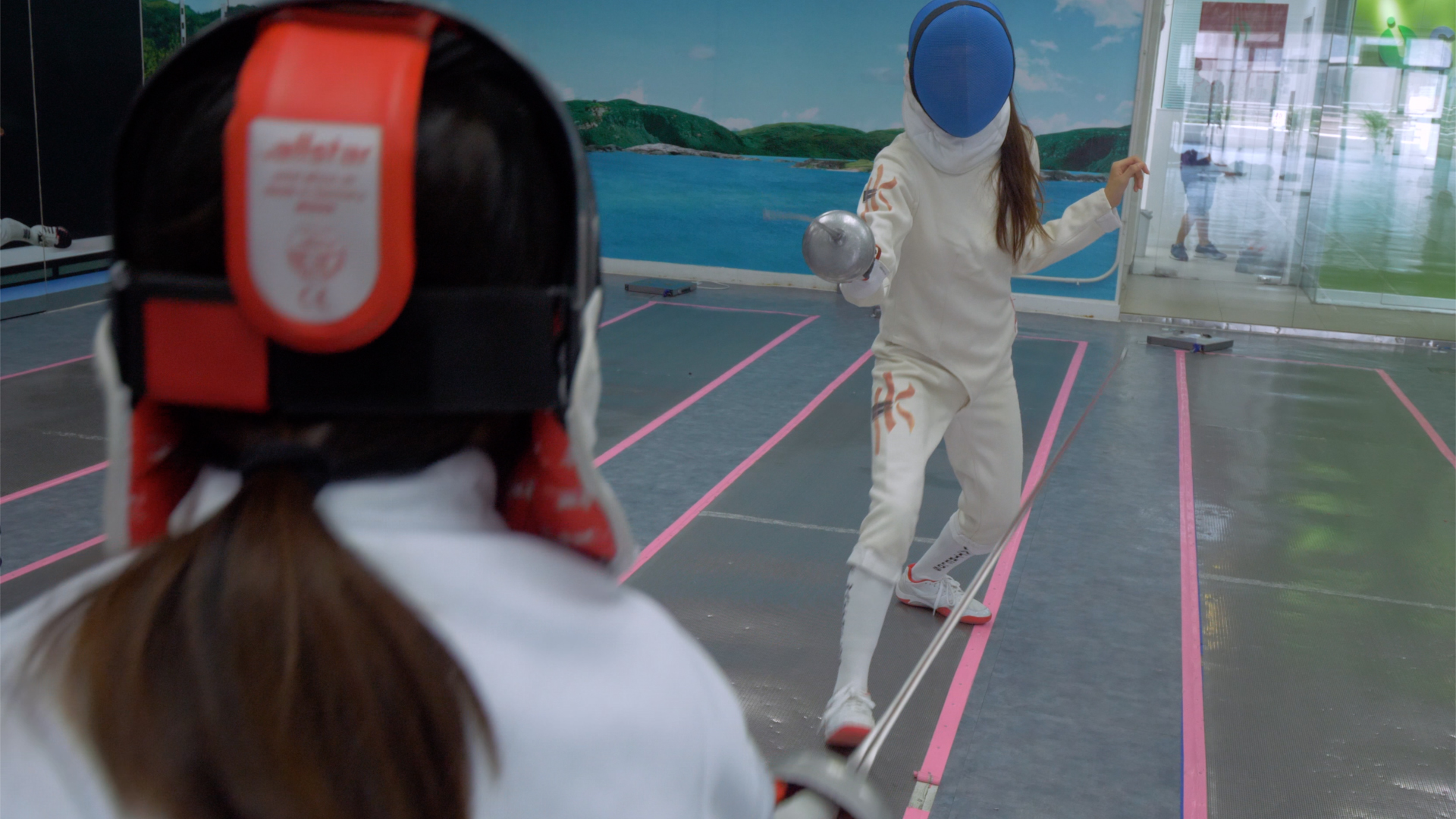Athletes and coaches turn to the cloud to optimize body movements
Two fencers cross swords. It may remind you of The Three Musketeers, Zorro, or The Princess Bride, but in Hong Kong? Shouldn’t we be thinking Jackie Chan or Bruce Lee?
It turns out that Hong Kong has a vibrant fencing scene and the territory has high hopes of winning medals at the 2020 Olympics.
To stay at the top, elite fencers routinely train for long hours alongside professional coaches to perfect their techniques. Minor adjustments can lead to big competitive advantages and reduce the chances of strain or injury.
But not everyone can have a private coach. And even if they do, there are some movements that even coaches cannot see with the naked eye.
Now the Hong Kong fencing community is getting a boost from artificial intelligence (AI) and the Internet of Things (IoT) thanks to a local start-up.
Wearable technology
RaceFit is a Hong Kong tech company with a mission to “understand human motion.” It has developed a line of “smart garments” with sensors that provide sophisticated data on how the wearer is moving, with feedback and analysis.
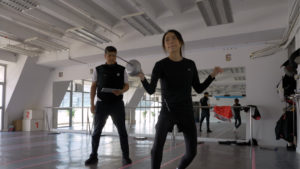 Fencer Kristy Cheung trains in a RaceFit suit. Its lightweight IoT sensors provide sophisticated data on how she is moving.
Fencer Kristy Cheung trains in a RaceFit suit. Its lightweight IoT sensors provide sophisticated data on how she is moving.
It works like this: An athlete dons a RaceFit suit, which is equipped with lightweight nine-axis sensors. Each sensor weighs about 15 grams and has a wireless charging battery inside.
These are connected via a patented Bluetooth network. The sensors feed data to a RaceFit app on a mobile device. The data is then analyzed by the company’s Fitness Ability Measurement System (FAMS) in the cloud.
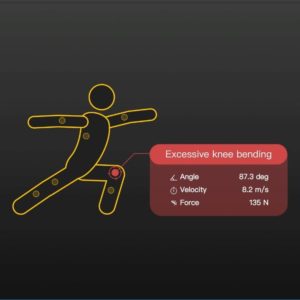 The app shows Cheung’s knee is wrongly angled when she lunges forward.
The app shows Cheung’s knee is wrongly angled when she lunges forward.
Using AI in the Microsoft Azure environment, the FAMS algorithm delivers a wealth of information on the person’s strength, stamina, flexibility, coordination, and balance.
But there is more. The company has worked with sports scientists to recognize specific movements that are unique to fencing.
This gives a coach a holistic view of how an athlete is performing and what needs to be improved, like having a better knee angle when lunging.
Once a problem is identified, a coach can develop a training regimen to address it, and even monitor an athlete’s progress remotely.
Kristy Cheung competes with the I-Fencing Alliance Club. She uses RaceFit with the help of her coach to find and rectify problems with exercise and practice.
“It’s interesting to quickly see where I am going right or wrong,” she says.
“I can immediately address weaknesses I didn’t even know that I had. I’m feeling more confident about performing my best.”
RaceFit’s solution has also been extended to other sports like high-intensity interval training (HIIT) training, cycling and tennis. Soon, RaceFit plans to expand the usability of its app to team sports, like football.
Beyond fencing
The technology is not just for coaches and high-end competitors. Anyone can use RaceFit in their regular lives. It comes with an exercise app with customizable routines. The app lets you know immediately if any of your movements need improvement, like if your hip position is too high while planking. It can keep track of your progress over time and prescribe new exercises to help you reach your fitness goals.
Additional sports, like cycling and running, are supported by downloadable modules.And more sports and exercises are being added to the list.
RaceFit co-founder and CEO Graham Mak says, “We are not limited to those exercises. We are only limited to human motion. If a customer says, ‘I’m in a canoe club and I want a canoe program,’ then we can do something like that.”
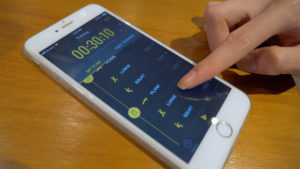 When a problem is identified, coaches can develop a training regimen to address it. They can also monitor an athlete’s progress remotely.
When a problem is identified, coaches can develop a training regimen to address it. They can also monitor an athlete’s progress remotely.
Mak also has plans to aid physical therapists. Wearing a simpler version of the sensor contained in a single band, patients can perform exercises as instructed by the therapists. The device will help the physical therapist determine if they do it correctly. “This will save a lot of time and it can be done with multiple patients at the same time.”
Dennis Poon, the company’s Chief Experience Officer, says physiotherapists who use the RaceFit system “can definitely take care of more patients and, more importantly, they will be able to monitor their recovery.”
A similar use is applicable to older people, especially those who live alone. According to the Hong Kong government, around 20% of adults over 65 have a fall at least once a year. Most of those report some kind of injury and nearly 10% break a bone. Since the RaceFit sensors give a complete picture of human movement, the system would know, for example, if a person has fallen down and needs assistance.
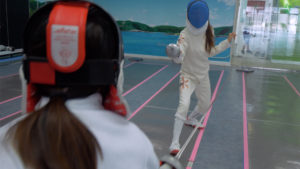 The company has been able to change its business model by being nimble as it embraces new technologies.
The company has been able to change its business model by being nimble as it embraces new technologies.
“What is the active and inactive times in a day? And, what about the time walking or sitting or lying on the bed? What does it represent? And, how can it affect health outcomes?” Mak says.
A long way from the garment industry
RaceFit’s journey to understanding human movement began with a much more pedestrian goal. According to Mak, his team just wanted to make a smart garment to revitalize the traditional apparel industry.
After three years of R&D, they decided to change direction and were inspired by the kind of motion-capture suits you see used in a Hollywood special effects production.
That led Mak to ask: “What if we understand motion and make recommendations afterwards?” They realized that by using Microsoft Azure cloud, they could build their own AI solution to focus on fitness ability management. “For example, when you do a push-up, did you do it correctly or incorrectly?”
By being nimble, changing direction, and embracing new technologies, Mak and his team have created new business models that have transformed the company.
Poon sums it up this way, “We started our company focusing on Sports and Fitness, but we’ve gone way beyond that already.”

